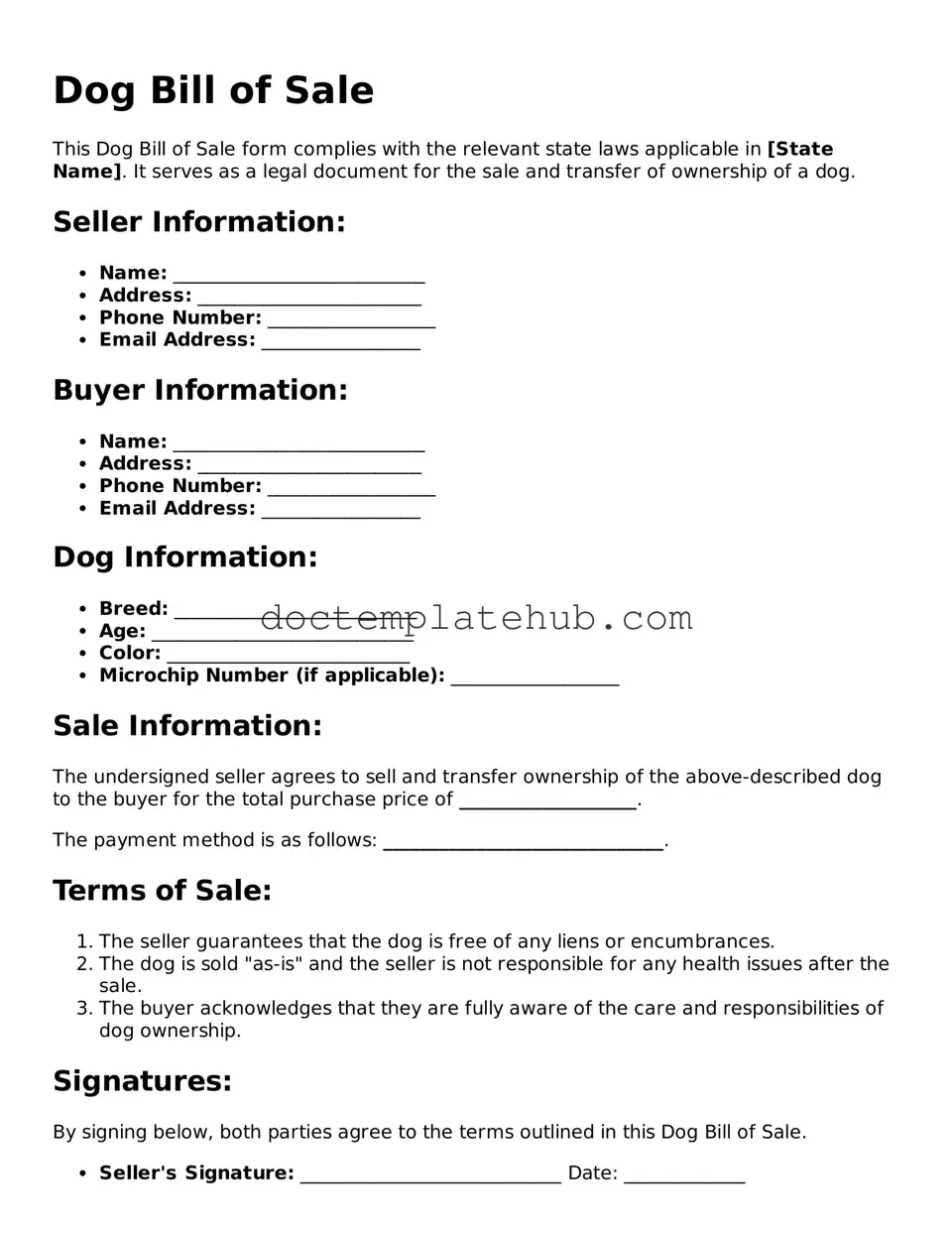What is a Dog Bill of Sale?
A Dog Bill of Sale is a legal document that records the transfer of ownership of a dog from one person to another. This form serves as proof that the seller has sold the dog to the buyer. It includes important details such as the dog's breed, age, and any identifying information like a microchip number. Having this document can help clarify ownership and protect both parties in case of disputes.
Why is a Dog Bill of Sale important?
This document is crucial for several reasons. First, it provides legal protection for both the buyer and the seller. It helps establish who owns the dog and can be useful if questions about ownership arise later. Additionally, it can serve as a record of the sale, including any agreements made about the dog's health or behavior. This transparency can prevent misunderstandings and promote responsible pet ownership.
What information should be included in a Dog Bill of Sale?
A comprehensive Dog Bill of Sale should include specific details. Key information includes the names and addresses of both the seller and the buyer, the dog's breed, age, color, and any registration details. It's also important to note the sale price and any warranties or guarantees provided by the seller regarding the dog's health. Including a statement that the seller is the rightful owner and has the authority to sell the dog is also essential.
Do I need to have a Dog Bill of Sale notarized?
In most cases, a Dog Bill of Sale does not need to be notarized. However, having it notarized can add an extra layer of legitimacy to the document. If you anticipate any potential disputes or if the transaction involves a significant amount of money, notarization may be a wise choice. It can help ensure that both parties are protected and that the document holds up in court if necessary.
Can a Dog Bill of Sale be used in different states?
Yes, a Dog Bill of Sale can generally be used across different states. However, laws regarding pet ownership and sales can vary. It's important to check the specific requirements of your state to ensure compliance. Some states may have additional regulations regarding the sale of animals, including health guarantees or specific disclosures. Always make sure the document meets local legal standards to avoid any issues.
